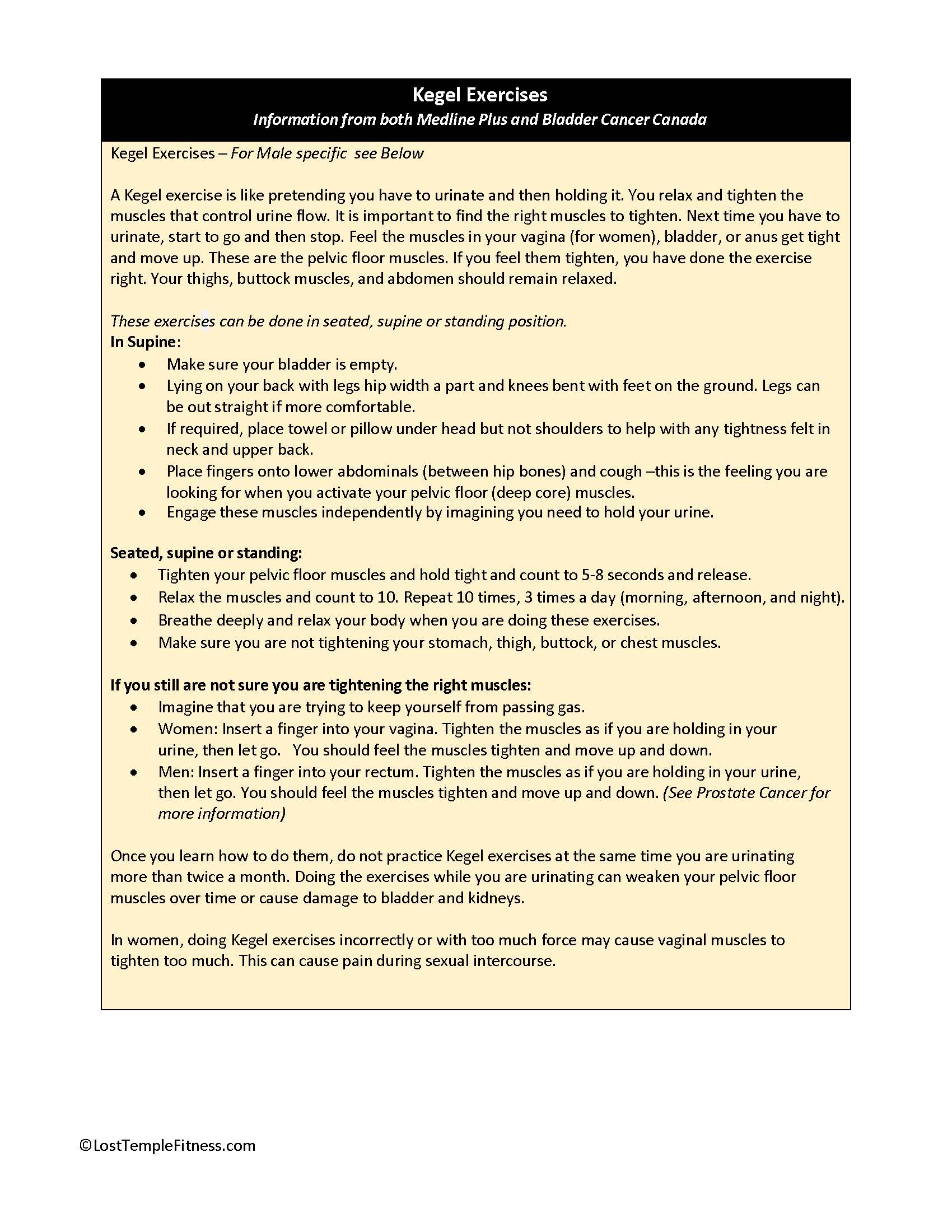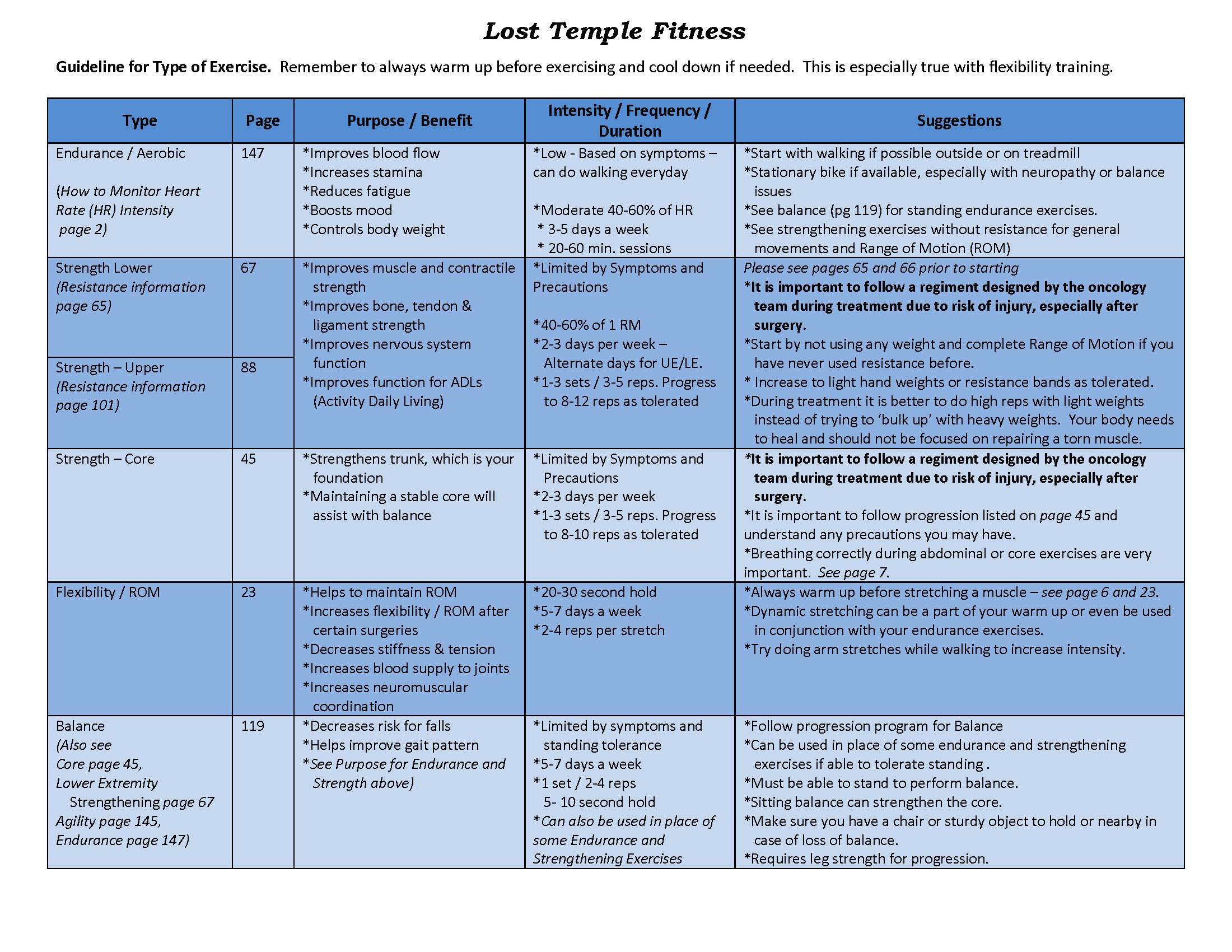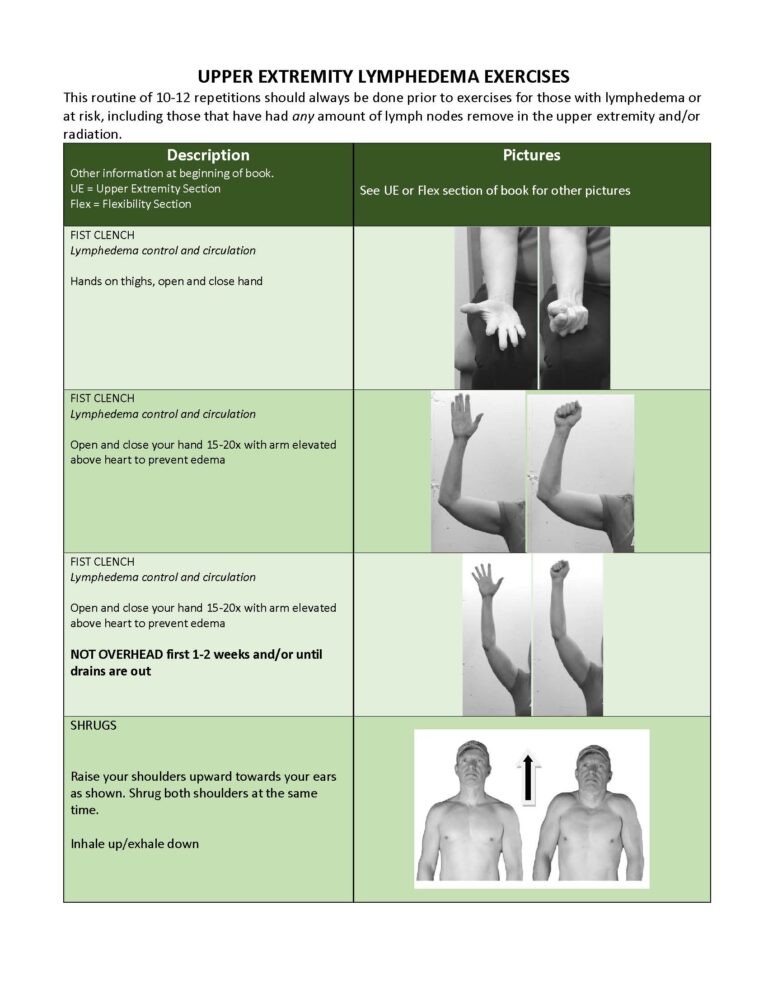Cancer & Exercise
Suggestions, Precautions, Benefits and Risks
Your Body is Your Temple
Research, Resources & Education
Information and pictures from National Cancer Institute unless otherwise specified
Starting to exercise while undergoing cancer treatments can be challenging, and this holds true for cancer survivors too. This section provides you with some tips on how to start an exercise program, potential risks to consider, and lymphatic drainage exercises for those with or at risk of lymphedema. Also included is a PDF with Kegel exercises.
It is crucial to gather information regarding your activity levels before, during and after cancer treatment and to assess any potential risks associated with initiating a physical exercise routine. It is recommended to consult with your healthcare provider or a trained professional in order to determine the most appropriate approach for your individual situation.
Preventative Measures
Complete Decongestive Therapy
Skin Care
Bandaging & Compression
Lymphedema & Breast Cancer
Manual Lymphatic Drainage
Exercise Program & Breathing
If you had breast surgery or reconstruction, there are some exercise precautions you should keep in mind. These precautions are important if you had surgery using the TRAM, DIEP, or LAT flap methods, tissue expanders, or if you have lymphedema, neuropathy, or nerve damage.
A Kegel exercise is like pretending you have to urinate and then holding it. You relax and tighten the muscles that control urine flow
Guideline for Type of Exercise including strength, flexibility, endurance and balance.
Remember to always warm up before exercising and cool down if needed. This is especially true with flexibility training.
Lymphedema is swelling caused by excess protein-rich lymph trapped within the interstitium and subcutaneous tissues. This is caused by dysfunction of the lymphatic system or pathology.
Disclaimer: The information in this book/website is for educational purposes only and has been obtained through research, publications and personal experience, and shall not be liable for incorrect information. Any mentioned publications or websites does not imply endorsement. As this industry is ever changing, I urge readers to confirm the information contained in this book/website. The author will not be liable for any injuries sustained from practicing techniques taught or for any typographical errors or omissions.
It is advised that you always check with your medical doctor or physical therapist before starting an exercise program or change in diet.
|
Information and pictures from National Cancer Institute unless otherwise specified |
References
| TOPIC | COMPANY |
|---|---|
| Physical Activity and the Cancer Patient | American Cancer Society |
| Exercise guidelines for Cancer Patients | Cancer Research UK |
| Pilates | CETI: Cancer Exercise Training Institute |
| Physical exercise | Dana Farber |
| Questions about exercise during and after cancer treatment | Dana Farber |
| Exercise - Search | Dana Farber |
| Breast Cancer Rehabilitation | Klose Training |
| Scapular winging: anatomical review, diagnosis, and treatments | National Library of Medicine |
| General | Pink Ribbon Program® |
| Physical Activity and Cancer | National Cancer Institute |
| Physical Activity and Cancer | CDC |









